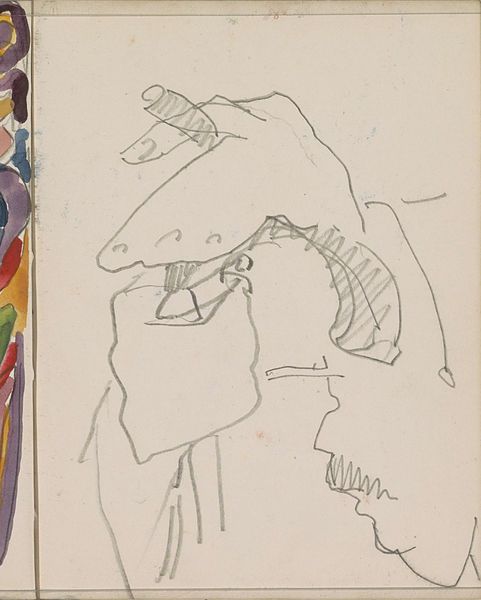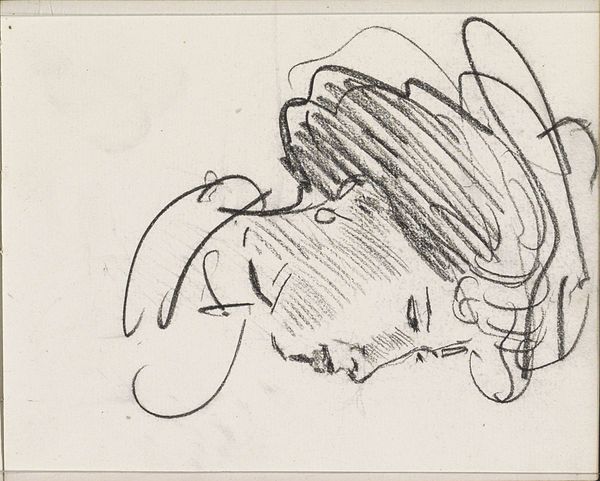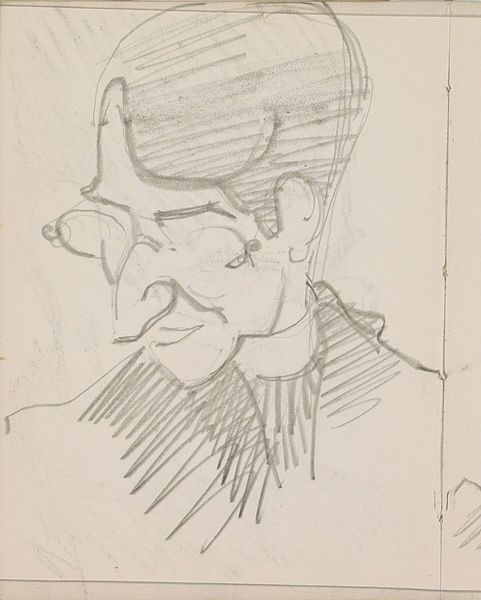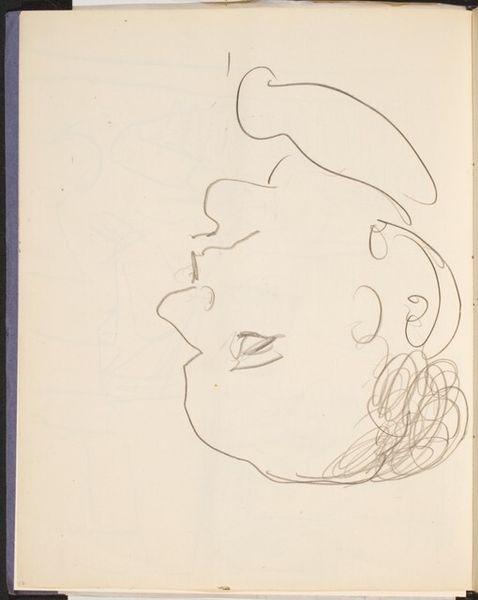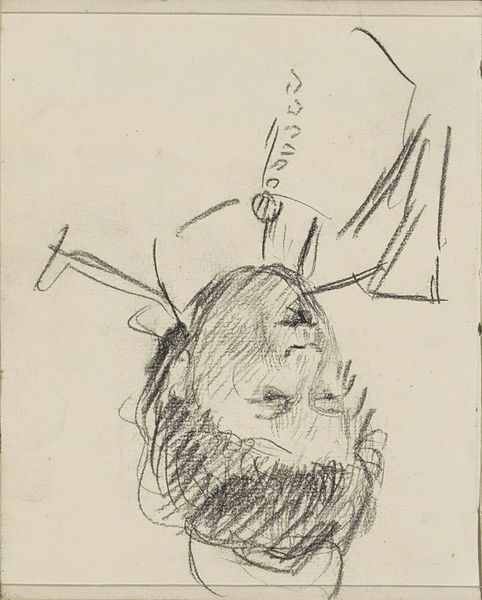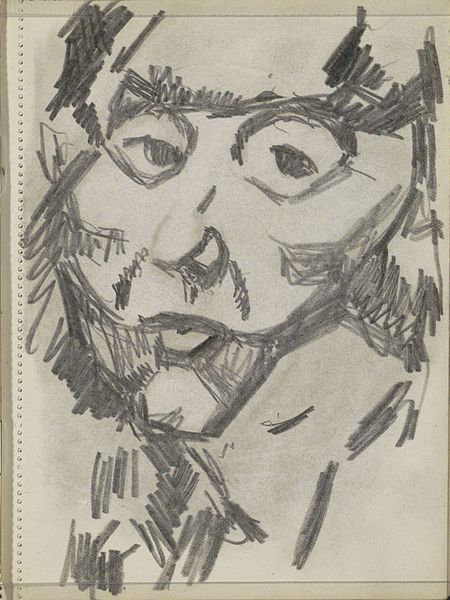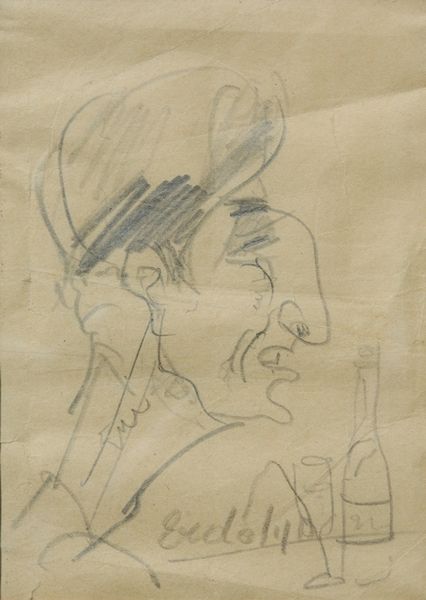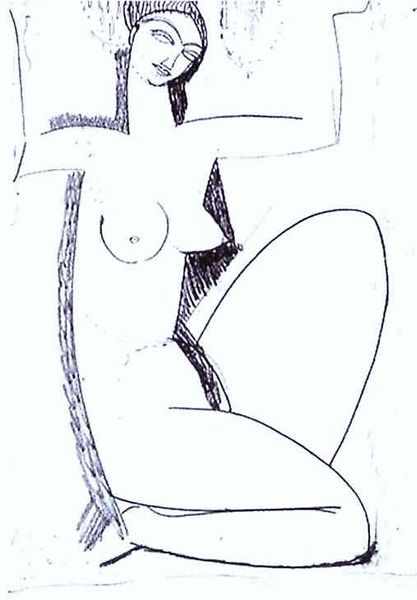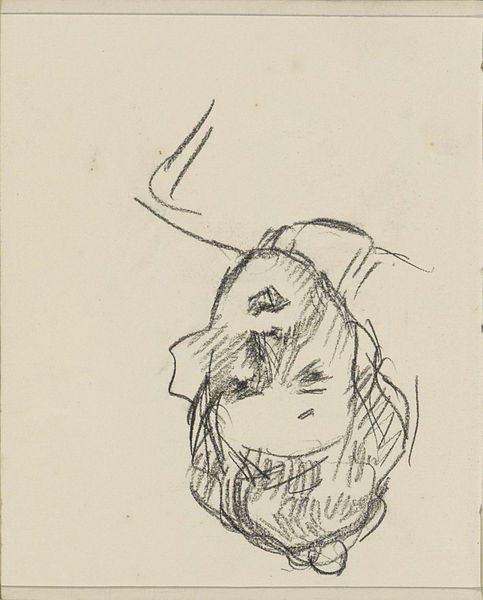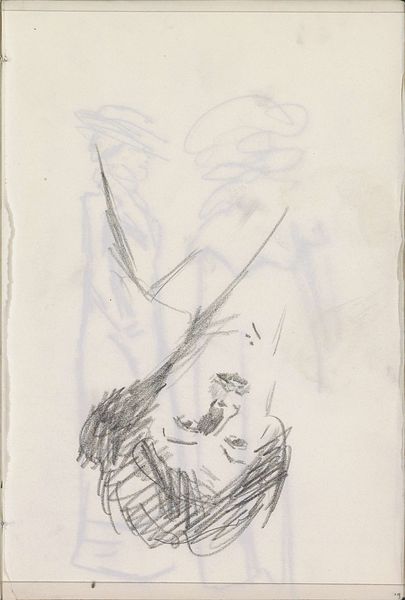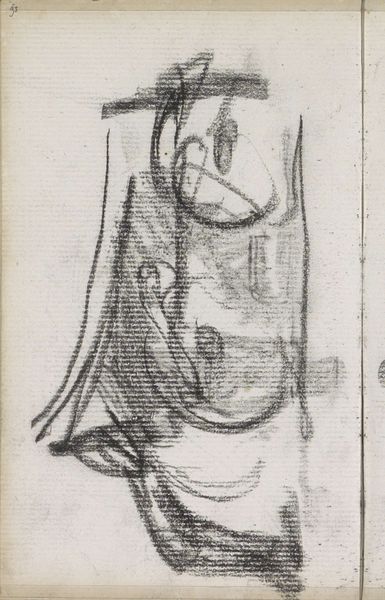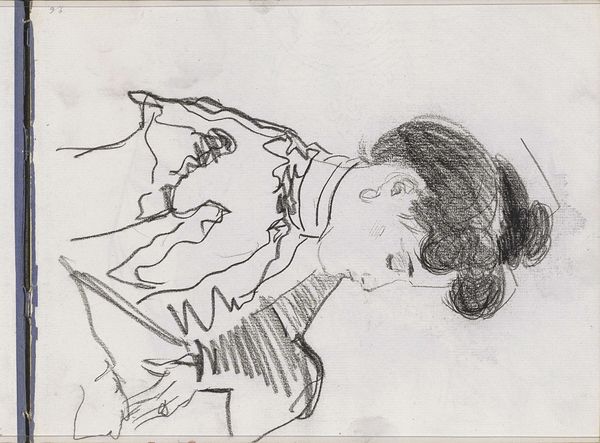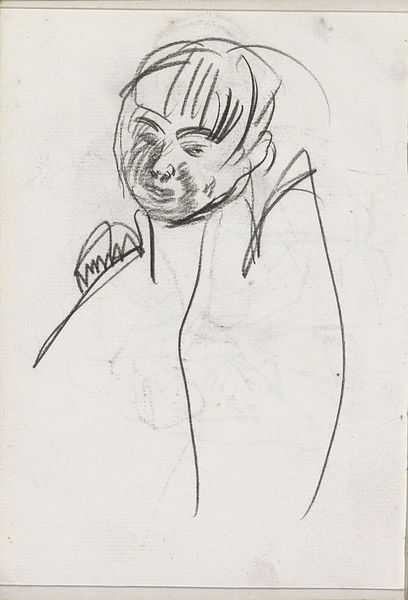
drawing, pencil
#
portrait
#
drawing
#
figuration
#
sketch
#
pencil
#
expressionism
Dimensions: 42.2 x 26.1 cm
Copyright: Public domain
Editor: We’re looking at a pencil drawing simply titled "Portrait" by Ernst Ludwig Kirchner, created in 1927. It's a fairly quick sketch, very expressive. What do you see in this piece, particularly knowing it's by Kirchner? Curator: This drawing vibrates with the anxieties of the interwar period. Kirchner, already grappling with the psychological fallout from his experiences in World War I, seems to capture a kind of detached alienation in the sitter's gaze. Look at the sharp, almost brutal lines. This isn't just a likeness; it’s an interrogation. The doubled lines, the almost frantic energy of the pencil strokes—how might that reflect the fragmented self, grappling with trauma and societal upheaval? Editor: It does feel like he’s capturing something more than just the person’s face, a sense of internal conflict maybe? But what about the Expressionist style? Is it just an aesthetic choice? Curator: Absolutely not "just" aesthetics. Expressionism, especially in the Weimar Republic, was deeply entwined with social critique. Kirchner wasn’t simply depicting appearances; he was using the distortion and rawness of the style to express a deeper, perhaps unconscious truth about the sitter and, by extension, the society they inhabited. What anxieties, do you think, would motivate this? Consider what was at stake politically. Editor: Right, the rise of nationalism, economic instability… It's like the portrait is a mirror reflecting a fractured society. Curator: Precisely. And think about Kirchner's own struggles—his addiction, his mental health challenges. These personal demons inevitably bled into his art, shaping his visual language. It’s a portrait of a person, yes, but also a portrait of an era in crisis. Editor: It’s interesting to see how his personal struggles and the broader societal anxieties intertwine in this seemingly simple drawing. I'll definitely look at Expressionist portraits differently now. Curator: And perhaps begin to ask: Whose stories are amplified, and whose remain unseen in these portrayals of the past? Thinking through the intersectional dimensions of these images help create meaningful encounters.
Comments
No comments
Be the first to comment and join the conversation on the ultimate creative platform.
